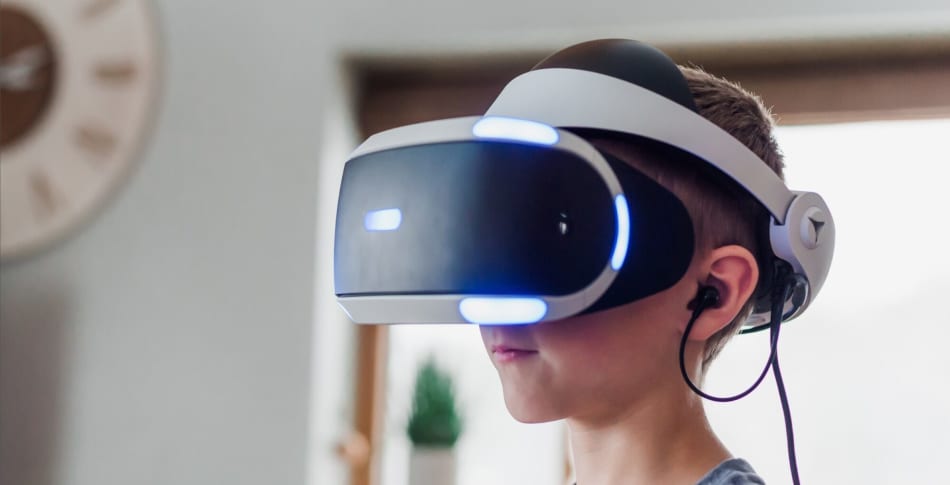




Diverse People, Diverse Perspectives
Waracle is an inclusive, inspiring & developmental home to the most talented and diverse people in our industry. The perspectives offered in our insights represent the views and opinions of the individual authors and not necessarily an official position of Waracle.
Computer vision for those who don’t know is analogous to human vision. We utilise our own vision to detect, contextualise and understand what is going on around us…. and computers are now being used to do the same.
The big difference with computer vision is that it’s about leveraging vast stores of high-quality image data from cameras, optical sensors and other device sensors to align them with machine learning and artificial intelligence systems.
If you are still a little confused… Think about a practical application like how a digital toolkit can identify tumours from medical imagery.
Our team have seen an uptick in interest from our clients in the potential of computer vision (CV), and it just so happens that we have been working in this space for much longer than the generative AI hype cycle has been propelling CV back into the public consciousness.
So let’s explore why CV is interesting, what it could be applied to and how it might just power the fortunes of the next big digital product businesses.

What’s already being achieved?
Translating unstructured image, video and sensor data into the kind of actionable insights that can drive better decision-making is difficult.
But there are many instances of computer vision applications in the market that are already delivering incredible value to the businesses that deploy them.
Let’s take a look at a few:
Cancer detection
Computer vision models are already achieving a physician level of accuracy at identifying moles from melanomas.
Trained on massive amounts of image data consisting of both healthy and cancerous tissue, computer vision automates the identification process, which can in turn reduce the chances of human error.
X-Ray analysis
Computer vision is being successfully applied to treatment and research, MRI reconstruction and surgery planning.
Although most doctors are still relying on the manual analysis of X-ray images for diagnosing and treating diseases, computer vision is starting to prove its value in automating the process, increasing efficiency and developing decision accuracy.
Traffic flow analysis
Drone-delivered visual traffic flow tracking is now being used to accurately track and count motorway traffic and to monitor & analyse traffic density in urban areas.
This helps to design the ideal traffic management systems, which in turn will improve road safety for pedestrians and motorists.
Parking occupancy detection
Visual parking lot occupancy detection has been identified as an alternative to more costly sensor-based technologies that require regular maintenance.
Camera-based parking occupancy detection systems have quickly achieved extremely high accuracy, this is beneficial not just for car parks but also for EV charging stations and other vehicular infrastructure.
—
Now that we understand what computer vision has already been applied to, we can start to hypothesise about what the near future of the space may look like.

What’s the art of the possible?
With Apple’s recent announcement of the Vision Pro as their flagship mixed reality headset device, the datasets that can be created by optical sensors might just be about to change and scale significantly.
The Vision Pro looks like it will offer a new way to develop immersive and interactive experiences for users, but that is only half of the story when it comes to the challenges it might solve… ultimately, it is a device for understanding the world around us and Apple’s recent investments in LiDAR and other adjacent, complimentary technologies might just allude to where things are headed.
By taking advantage of Vision Pro’s spatial capabilities computer vision & LiDAR driven applications could see a new hypothetical horizon.
Developers will be able to leverage advanced computer vision algorithms to build applications that recognise spaces, faces, environments, characteristics and objects …and potentially even detect emotions.
These capabilities could help develop applications for diverse fields such as psychiatric therapy, identification of financial vulnerability, forensic psychology, energy efficiency and customer security.
If you imagine that everything in your own human spectrum of vision could become a useful datapoint leveraged by AI to create better decision making systems and frameworks… then the art-of-the-possible is pretty much endless!
Why are Waracle so excited about computer vision?
We have been using computer vision to develop enterprise-grade digital solutions for the last 7 years and we know how valuable it has been to the businesses that we have collaborated with.
Whether we have been looking at eye movement tracking for eye tests, predictive maintenance for industry, real-time currency conversion for travellers, text identification in inhospitable settings… we’ve done it all.
We are currently looking at practical applications to support clinicians make better pre-op decisions and how we can use computer vision to measure, model and track size & shape of body parts and maladies over time.
We believe that the intersection between machine learning, AI and computer vision is just about to explode… and we think we are perfectly placed to get our clients to market faster than any of our competitors.
If you are interested in what your business could achieve with computer vision product development, get in touch with our team today.
Authors
Head of Marketing
Related

Article • 08 May 2025
Embracing the AI First Future

Article • 26 February 2025
Turning data into your competitive advantage

Article • 31 January 2025
Cultivate your ‘data as an asset’ agenda

Article • 25 September 2024
Can you build emotional loyalty through digital experiences?

